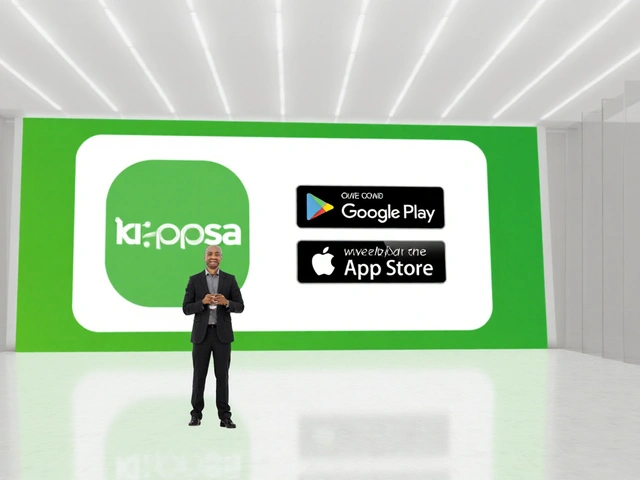
Why Safaricom is Blending Two Apps
For more than a decade, Safaricom kept its customers juggling two separate mobile applications. The M-PESA app started out as a financial wallet, while mySafaricom acted as the go‑to place for line management, airtime purchases and home broadband settings. Over time, the financial app grew into a "super app" – a marketplace that now hosts mini‑apps for ticket booking, insurance, shopping and even a Visa‑backed virtual card for streaming services abroad.
The latest beta rollout shows Safaricom slipping many of the self‑care tools that lived exclusively in mySafaricom into the M-PESA interface. Screens shared on social media illustrate a unified homepage where you can top up your line, check data balances and order a Home Fibre package without ever opening the older app. This consolidation is not just cosmetic; it reflects a strategic shift toward a single digital hub that can command both user attention and revenue streams.
What the Integration Means for Users and the Business
From a consumer perspective, the merge promises less friction. No more switching between apps to pay a bill, then opening another to change your router settings. A single sign‑in experience also means safer authentication, as Safaricom can apply the same AI‑driven fraud detection across all touchpoints. The new cloud‑native core, launched on 22 September 2025, underpins this ambition. It currently supports 6,000 transactions per second and scales to 12,000, offering 99% uptime even during peak evenings when money transfers spike.
Financially, the numbers are compelling. In the twelve months to March 2025, the M-PESA app processed KES 2.3 trillion (about $17.9 billion) and drove revenue up 15.2% to KES 161.1 billion. By pulling more services into the same platform, Safaricom can cross‑sell faster, boost average revenue per user, and collect richer data for targeted offers. The added services – from PayPal withdrawals to GlobalPay virtual cards – already blur the line between telecom and fintech, positioning Safaricom as a one‑stop digital shop for a country where mobile phones are the primary gateway to the internet.
However, gaps remain. Configuring 4G and 5G routers still requires a separate mini‑app, and Home Fibre management is not fully migrated. This means mySafaricom will not disappear overnight. Instead, it will likely stay alive as a niche tool for network‑specific tasks while the bulk of everyday interactions move to M-PESA.
Industry observers note that the two‑app reality has been a source of confusion for many users, especially those new to mobile money. By folding the best of both worlds – the robustness of a financial platform and the convenience of line management – Safaricom hopes to reduce churn and strengthen brand loyalty. The beta phase suggests a smooth UI transition, with icons for airtime, data bundles and home internet placed alongside loan offers and international card controls.
Looking ahead, the migration could set the stage for further expansion. The current super app already hosts third‑party mini‑apps, and a unified backend could make it easier for new partners to plug into Safaricom’s ecosystem. Imagine a future where a farmer can access weather data, micro‑insurance, and a loan, all without leaving the app. That vision aligns with Kenya’s broader ambition to become a hub for mobile‑first innovation.
For now, the key takeaway for customers is simple: expect to see more of your everyday telecom tasks appear inside the M-PESA app. Keep an eye on updates, and be ready to adopt a single, more powerful tool for everything from sending money to managing your home internet connection.




The merger simply reflects the inevitable convergence of telco and fintech ecosystems.
While many applaud the sleek UI, the underlying data silo dissolution could inadvertently erode user autonomy, turning the app into a digital panopticon that watches every airtime purchase and loan request with algorithmic zeal.
One might argue that the convenience outweighs privacy concerns, yet history teaches us that convenience often masquerades as consent.
Thus the integration is a double‑edged sword, shimmering with promise while whispering caution.
I see the unified platform as a boon for newcomers who have struggled with juggling two logins; it lowers the entry barrier and fosters digital inclusion across Kenya's diverse demographics.
Indeed, the synthesis of M‑PESA and mySafaricom transcends mere UI polishing; it signals a paradigm shift in how African societies conceptualize ownership of digital services.
When a farmer can settle a loan, adjust a router, and purchase a bus ticket from a single pane, the friction that once delineated economic participation evaporates.
This convergence dovetails with the continent’s leapfrogging narrative, where mobile money has already supplanted traditional banking infrastructures.
Moreover, the cloud‑native core’s capacity to handle upwards of twelve thousand transactions per second ensures that scalability does not become a bottleneck for mass adoption.
From a cultural standpoint, consolidating the apps respects the lived reality of users who already juggle multiple identities across mobile ecosystems.
It also offers Safaricom a richer tapestry of behavioral data, enabling hyper‑personalized offerings that can uplift underserved segments.
By unifying authentication, the platform can deploy more robust AI‑driven fraud detection, safeguarding both the low‑income user and the corporate bottom line.
Nevertheless, we must remain vigilant against the monopoly-esque concentration of data that could stifle competition and innovation.
The inevitable cross‑selling opportunities should be balanced with transparent opt‑out mechanisms to preserve user agency.
Regulators will need to craft nuanced policies that encourage growth while curbing potential abuses of market power.
In practice, the rollout’s beta phase has already demonstrated seamless navigation between airtime top‑ups and international card controls, a testament to thoughtful UX design.
The inclusion of third‑party mini‑apps opens avenues for local entrepreneurs to embed services directly within the super‑app, fostering an ecosystem of homegrown solutions.
Future expansions could see weather APIs, micro‑insurance, and agritech tools cohabiting, which would further cement the platform as a digital village square.
Ultimately, the success of this merger hinges on Safaricom’s commitment to equitable access, continuous innovation, and ethical stewardship of the amassed data.
The integration architecture leverages a micro‑services paradigm supported by Kubernetes orchestration, facilitating decoupled feature deployment and continuous integration pipelines that reduce time‑to‑market for new fintech modules.
By abstracting the telecommunication provisioning layer into API‑centric endpoints, developers can programmatically manage SIM activations, data bundle allocations, and broadband provisioning without navigating legacy monoliths.
Furthermore, the adoption of gRPC for inter‑service communication ensures low‑latency, high‑throughput exchanges, which is critical given the platform’s projected transaction velocity of 12k TPS during peak periods.
This technical foundation not only augments operational resilience but also provides a scalable substrate for future third‑party onboarding, be it insuretech partners or agritech data feeds.
In essence, the super‑app is evolving from a consumer‑facing interface into a comprehensive digital infrastructure layer that underpins a broader ecosystem of value‑added services.
Aggregating all services into a single app risks turning personal finance into corporate surveillance.
Great breakdown! 😊 The way they’re using containerization really shows they’re future‑proofing the platform, which should keep downtime to a minimum for everyday users.
Honestly the move just makes life easier for anyone who’s ever gotten tangled in two apps – you can finally get your data and money done in one go
Interesting point!! However, the integration appears to shift privacy concerns under a different UI rather than resolve them!!
All in all, this unified app could boost user retention and drive new revenue streams.
From a sovereignty perspective, consolidating these services under a Kenyan flagship strengthens digital self‑reliance and counters foreign platform dominance.